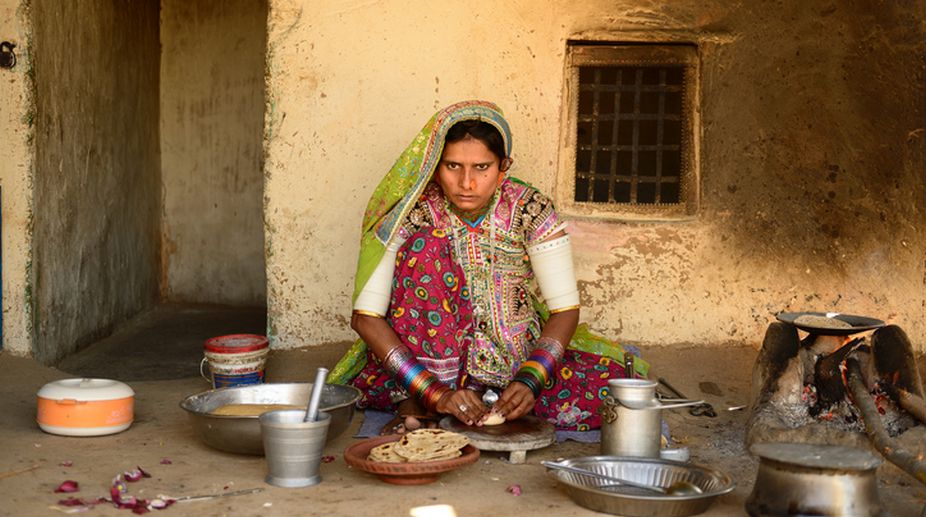Last week, a forum on clean cooking was arranged in New Delhi. Funded by international organisations like the UN, the World Bank and USAID, among others, it attracted about 600 delegates from 50 countries. The three-day forum discussed various cooking energy strategies to mitigate the misery of poor households in rural areas.
There are reports (the veracity of the data is questionable) that nine million deaths take place globally every year due to indoor air pollution in rural households. Thus, various governments are dedicated to removing this pollution by producing clean cooking fuels and technologies. There were panel discussions on improved biomass stoves, supply chain of pelleted fuel, solar PV cooking and ethanol stoves, and on funding and investments in this sector.
Advertisement
In India, this programme is being spearheaded by the Pradhan Mantri Ujjwala Yojana (PMUY) where the aim is to provide 50 million LPG connections to the rural poor by 2020. The government claims that 30 million connections have already been provided.
India today imports 90 per cent of its LPG (50 per cent is directly imported and 40 per cent is produced from imported oil) with a total outlay of Rs 32,000 crore ($5 billion) per year. Providing 50 million connections to rural households means this import bill will substantially increase.
Besides the cost, there are problems on the ground impeding the implementation of the scheme. There are instances of poor households not getting cylinders because of lack of delivery infrastructure or because they are diverted to other customers. Also, even at the subsidised price of Rs 490 per cylinder, it is too costly for the rural poor.
So, in many cases, when the gas in their cylinder is over, they go back to wood or biomass residues which are nearly free.
Another scheme involves promoting electric cooking to reduce pollution. Even today there are more than 50 million rural households which do not have any electricity; even in villages where the government claims that electricity has reached, it comes for a few hours late at night when there is no cooking. The induction method consumes nearly 1,000 W of power. With this kind of power, a rural household can get excellent lighting and sufficient energy to operate a fan or other household gadgets.
The government is also talking of using PV solar power for running the induction stoves. Since there is no sun in the evening and early morning (when most of the cooking in rural households is done), there will be a need to store power — unviable at the moment. Besides, all PV modules currently used in India are imported.
For a decentralised, rural-based country like ours, we should opt for systems that convert locally available energy resources directly into heat for cooking.
Liquid fuels have the highest energy density among all the fuels and are easy to transport. Thus they should be promoted for use in efficient liquid fuel stoves for cooking.
An excellent technology for liquid fuel cooking is a lanstove developed in Phaltan, Maharashtra. It runs on diesel, which is available even in the smallest village. It produces excellent light (equivalent to a 100-200 W incandescent bulb) via a thermoluminscent mantle and the heat from the mantle cooks a complete meal for a family of five.
It does not produce any smoke, smell, or particulates and since both heat and light are produced simultaneously, it is five times more efficient than electric cooking and lighting. The diesel can be subsidised for the rural poor through the Aadhar card.
Whenever we talk of kerosene or diesel, the first reaction is that they are dirty fuels. But let me remind you that all fuels are dirty — it is their combustion which makes them clean. Thus the focus should be on developing excellent combustion technologies for liquid fuels.
There is a need fund R&D so that agricultural residue can be converted into liquid fuels. India produces close to 600-800 million tonnes of agricultural residue per year. Most of it is burned after the harvest, resulting in air pollution in both cities and towns. Use of this residue to produce liquid fuels can drastically reduce our petroleum import bill.
However, very little international funding is available for pushing such technologies for rural cooking. And, though there are worldwide efforts underway on improving stoves, the biggest problem of rural women remains — the drudgery of cooking. After toiling the whole day in the field, they are required to cook a complete meal for the family. This, together with the meagre rations from the Public Distribution System shops results in malnourishment in rural households.
So, a very novel scheme of creating rural restaurants has been proposed, also in Phaltan. These restaurants will provide clean, wholesome food to the rural poor at a subsidised price via Aadhar cards. For normal clients the restaurants will charge the full price. This will not only give good food to the poor but the indoor air pollution in rural households will also be reduced, besides giving women relief from the drudgery of cooking.
Global forums like the one held in Delhi may not help the rural poor directly but have been successful in bringing into focus the problems faced by them. This will facilitate an influx of funding — and, hopefully, bright brains — to the neglected areas of development.











